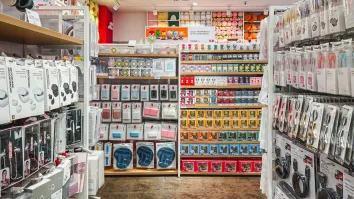
What’s driving the rise of marketplaces in global e-commerce?
Low prices and AI propel growth in 2024.
Online marketplaces now account for the majority of global e-commerce, fuelled by third-party sellers, consumer demand for low prices, and rapid advances in technology.
In 2024, marketplaces generated 62% of global retail e-commerce sales, totaling $2.4t. Third-party (3P) sellers made up 81% of that total, up from 72% in 2014. Major platforms are prioritizing 3P sales to expand product offerings, grow revenue through seller fees and ads, and avoid the cost and complexity of managing inventory.
Cost is the main driver behind online shopping. According to Euromonitor’s Voice of the Consumer: Lifestyles Survey (Jan–Feb 2025), “best price” is the top reason consumers shop online.
Platforms like Temu, Shein, and AliExpress have surged in popularity by leveraging direct manufacturer-to-consumer models, streamlining supply chains and passing cost savings to consumers. Their focus on ultra-low prices has resonated particularly well with budget-conscious shoppers worldwide.
Social media platforms-turned-marketplaces such as Douyin and TikTok, owned by ByteDance, are blurring the lines between entertainment and e-commerce. Through livestreaming and closed-loop shopping ecosystems, these platforms enable real-time product discovery, interaction, and transactions.
AI is also reshaping the marketplace experience. In late 2024, Evian launched 24/7 GenAI avatars on Shopee Live in Thailand. JD.com’s AI system, Yanxi, now supports sellers with marketing tools and analytics.
Free delivery and returns are among the most valued features by digital consumers, according to Euromonitor’s Voice of the Consumer: Digital Survey (Mar–Apr 2024).
In response, leading marketplace operators have poured investment into logistics infrastructure. Amazon has scaled its Prime service to cover over 300 million items. Alibaba’s Cainiao logistics arm runs more than 1,100 warehouses and 380 sorting centers, giving it one of the largest delivery networks in the world.
To stay competitive, marketplaces are moving into new areas: finance, advertising, logistics, and loyalty programs. Grocery is a major focus. In 2024, marketplaces made up 49% of global FMCG e-commerce sales. Amazon is merging its services—Amazon.com, AmazonFresh, and Whole Foods—to better compete with Walmart and other grocery giants.

















 Advertise
Advertise








